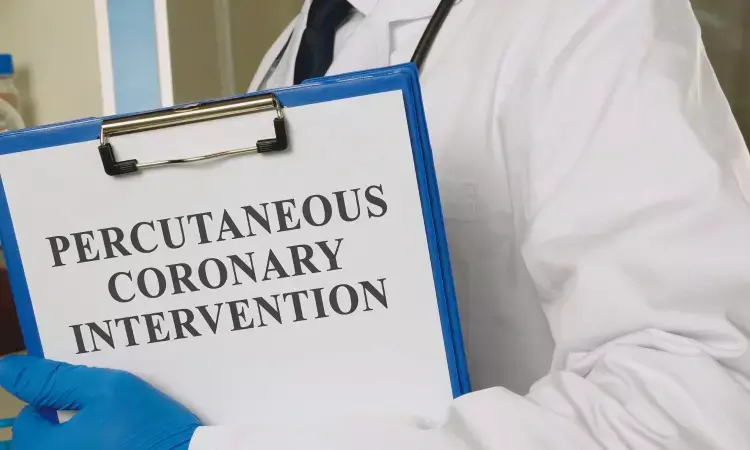- Home
- Medical news & Guidelines
- Anesthesiology
- Cardiology and CTVS
- Critical Care
- Dentistry
- Dermatology
- Diabetes and Endocrinology
- ENT
- Gastroenterology
- Medicine
- Nephrology
- Neurology
- Obstretics-Gynaecology
- Oncology
- Ophthalmology
- Orthopaedics
- Pediatrics-Neonatology
- Psychiatry
- Pulmonology
- Radiology
- Surgery
- Urology
- Laboratory Medicine
- Diet
- Nursing
- Paramedical
- Physiotherapy
- Health news
- Fact Check
- Bone Health Fact Check
- Brain Health Fact Check
- Cancer Related Fact Check
- Child Care Fact Check
- Dental and oral health fact check
- Diabetes and metabolic health fact check
- Diet and Nutrition Fact Check
- Eye and ENT Care Fact Check
- Fitness fact check
- Gut health fact check
- Heart health fact check
- Kidney health fact check
- Medical education fact check
- Men's health fact check
- Respiratory fact check
- Skin and hair care fact check
- Vaccine and Immunization fact check
- Women's health fact check
- AYUSH
- State News
- Andaman and Nicobar Islands
- Andhra Pradesh
- Arunachal Pradesh
- Assam
- Bihar
- Chandigarh
- Chattisgarh
- Dadra and Nagar Haveli
- Daman and Diu
- Delhi
- Goa
- Gujarat
- Haryana
- Himachal Pradesh
- Jammu & Kashmir
- Jharkhand
- Karnataka
- Kerala
- Ladakh
- Lakshadweep
- Madhya Pradesh
- Maharashtra
- Manipur
- Meghalaya
- Mizoram
- Nagaland
- Odisha
- Puducherry
- Punjab
- Rajasthan
- Sikkim
- Tamil Nadu
- Telangana
- Tripura
- Uttar Pradesh
- Uttrakhand
- West Bengal
- Medical Education
- Industry
Intravascular imaging-guided PCI best strategy for MACE reduction, shows new research

USA: A new network analysis published in the Journal of the American College of Cardiology has shown intravascular imaging-guided PCI to be the best strategy to lower the risk of major adverse cardiovascular events (MACE).
The meta-analysis, which included 32 randomized, controlled trials comprising more than 22,600 patients, found that angiography-guided percutaneous coronary intervention (PCI) had consistently worse outcomes compared with functionally guided and intravascular imaging-guided PCI over follow-up ranging from 6 months to 5 years.
Currently, functional testing with fractional flow reserve (FFR) or instantaneous wave-free ratio (iFR) is a class 1 recommendation to help guide decisions around PCI. At the same time, IVUS use is a class 2a recommendation to help lower the risk of ischemic events in left main CAD or complex coronary lesions, optical coherence tomography (OCT) is considered a reasonable alternative to IVUS.
There is no clarity on whether intravascular imaging or functional guidance is the best strategy to optimize outcomes in patients undergoing PCI and if the results differ in patients with versus without acute coronary syndromes (ACS). Therefore, Toshiki Kuno, Albert Einstein College of Medicine, New York, NY, USA, and colleagues aimed to evaluate clinical outcomes with functionally guided PCI, or imaging-guided PCI compared to conventional angiography-guided PCI.
For this purpose, the researchers searched the online databases for randomized controlled trials (RCTs) investigating outcomes with functionally guided, intravascular imaging-guided, or angiography-guided PCI. The primary outcome of the network meta-analysis was trial-defined MACE -- a composite of myocardial infarction (MI), cardiovascular death, and target lesion revascularization (TLR). P-scores were used to rank PCI strategies (best to worst). Thirty-two eligible RCTs comprising a total of 22,684 patients were included.
The researchers reported the following findings:
- Compared with angiography-guided PCI, intravascular imaging-guided PCI was associated with reduced risk of MACE (relative risk (RR)=0.72), MI (RR=0.81), cardiovascular death (RR=0.56), stent thrombosis (RR=0.48), and TLR (RR=0.75).
- When compared with angiography-guided PCI, functionally guided PCI was associated with reduced risk of MACE and MI.
- Intravascular imaging-guided PCI ranked first for the outcomes of MACE, stent thrombosis, cardiovascular death, and TLR. The results were consistent in the ACS and non-ACS cohorts.
"We showed that functionally guided PCI with primarily FFR or iFR, as well as intravascular imaging using IVUS or optical coherence tomography, outperformed angiography-guided PCI alone for MACE reduction over follow-up ranging from 6 months to 5 years," the researchers wrote.
"Imaging-guided PCI is the best strategy in both ACS and non-ACS settings," they concluded.
Reference:
Kuno T, Kiyohara Y, Maehara A, Ueyama HA, Kampaktsis PN, Takagi H, Mehran R, Stone GW, Bhatt DL, Mintz GS, Bangalore S. Comparison of Intravascular Imaging, Functional, or Angiographically Guided Coronary Intervention. J Am Coll Cardiol. 2023 Dec 5;82(23):2167-2176. doi: 10.1016/j.jacc.2023.09.823. Epub 2023 Oct 23. PMID: 37995152.
Dr Kamal Kant Kohli-MBBS, DTCD- a chest specialist with more than 30 years of practice and a flair for writing clinical articles, Dr Kamal Kant Kohli joined Medical Dialogues as a Chief Editor of Medical News. Besides writing articles, as an editor, he proofreads and verifies all the medical content published on Medical Dialogues including those coming from journals, studies,medical conferences,guidelines etc. Email: drkohli@medicaldialogues.in. Contact no. 011-43720751


